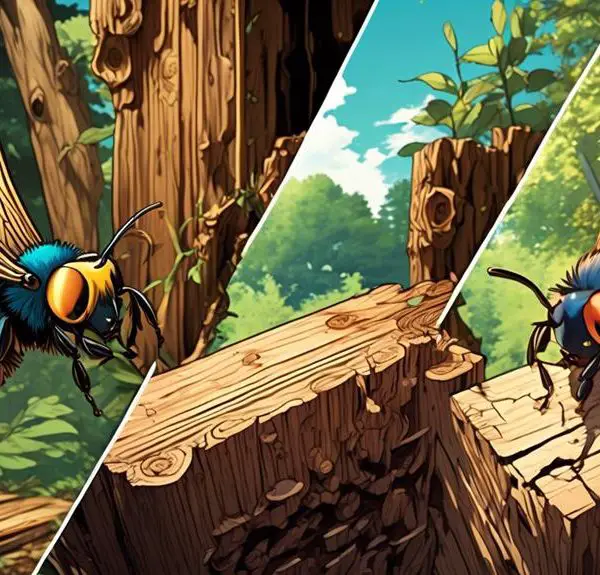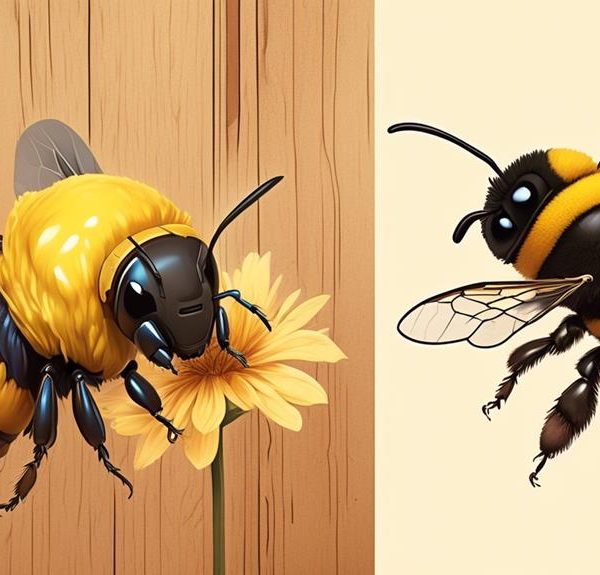Wage war on silent invaders; uncover the crucial differences between carpenter bees and termites to protect your home from potential damage.
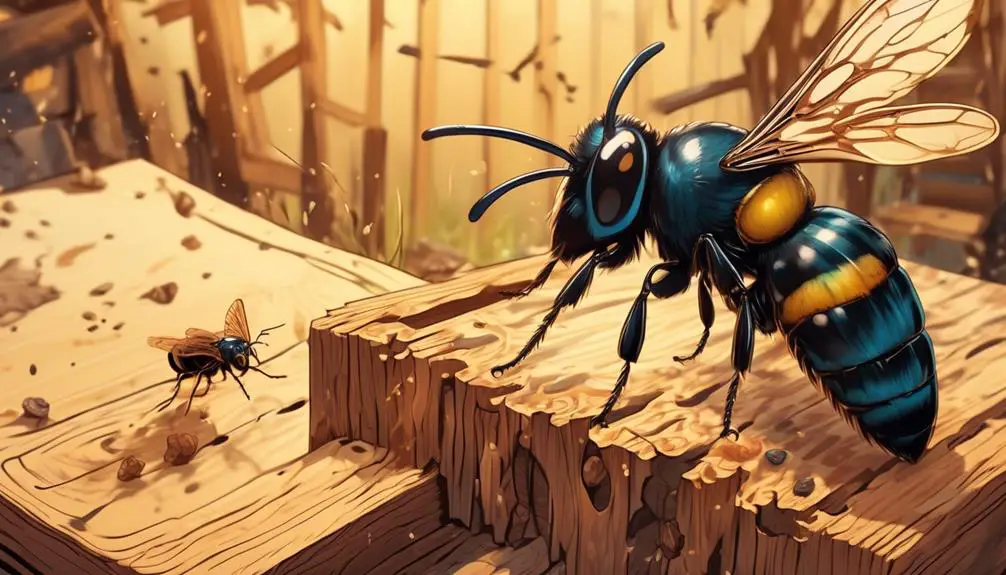
Carpenter Bees Vs Termites
Much like the fabled Trojan Horse that brought an unexpected surprise, your home could also be harboring silent invaders: carpenter bees and termites.
These pests, although small, can cause extensive damage to your property.
As you navigate the labyrinth of pest control options, it's crucial to understand the differences between these two insects.
What damage can they cause? How do you identify them? Are their control measures the same or different?
The answers to these questions are vital, and they might just save your home from an invisible enemy.
Stay tuned as we unravel these mysteries and more.
Key Takeaways
- Carpenter bees excavate wood to build nests, while termites consume the wood they infest.
- Carpenter bees primarily feed on nectar and pollen, whereas termites have bacteria in their gut that break down cellulose.
- Carpenter bees weaken wood structures with their nesting tunnels, potentially leading to collapse, while termites can cause significant damage to load-bearing walls and foundations.
- Prevention and regular inspections are crucial in managing both pests, and choosing the right pesticide for an infestation is important for effectively controlling and eliminating carpenter bees and termites.
Understanding Carpenter Bees
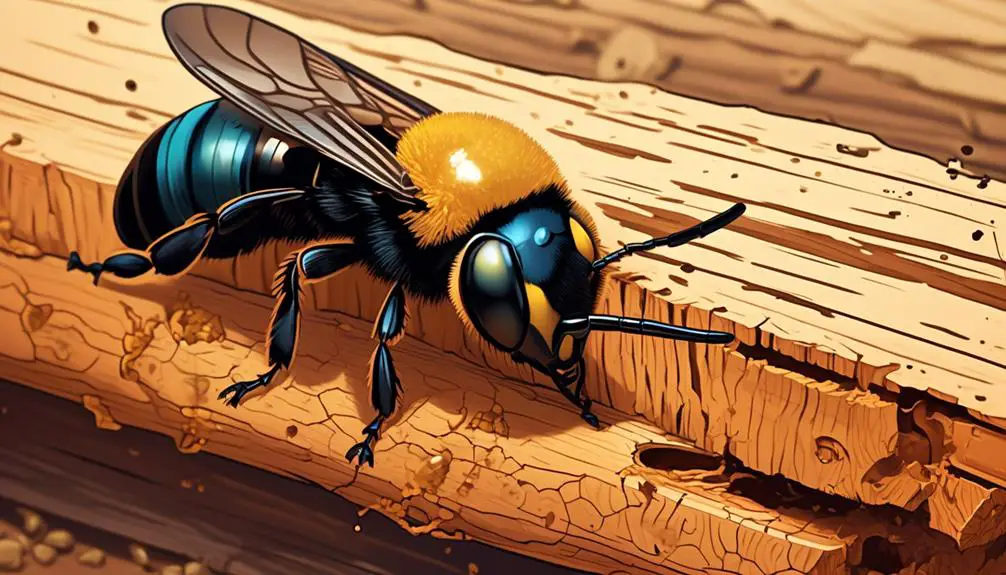
Diving into the world of carpenter bees, you'll discover that these insects, unlike termites, don't consume wood but rather excavate it to build their nests. They're not your typical pests; they're fascinating creatures with a unique approach to survival. Armed with powerful mandibles, they meticulously bore into wood, creating intricate tunnels to house their eggs and protect their progeny.
Though their nesting habits may cause structural damage, they're not inherently destructive. They don't feed on wood like termites, they simply shape it. Their diet consists primarily of nectar and pollen, making them critical pollinators in many ecosystems.
In terms of taxonomy, carpenter bees belong to the Xylocopa genus, encompassing over 500 species worldwide. They're typically larger and sturdier than their honeybee counterparts, with a shiny, hairless abdomen. Male carpenter bees, interestingly, are incapable of stinging. It's the females who carry that defense mechanism, yet they're generally docile unless provoked.
Getting to Know Termites
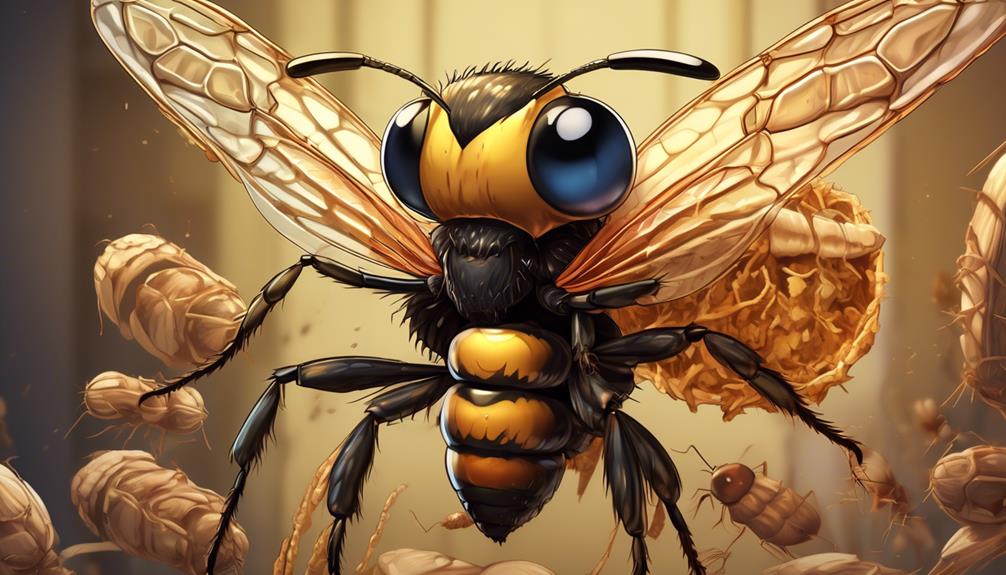
Shifting our focus from the wood-carving carpenter bees, let's now turn our attention to termites, silent destroyers that, unlike the former, actually consume the wood they infest. As a member of the insect order Isoptera, termites are social creatures that live in colonies numbering in the thousands or even millions. The colony's organization is a marvel of insect society, with a division of labor among castes that include workers, soldiers, and reproductives.
Sure, you're curious about why termites are so destructive. These pests have bacteria in their gut that can break down cellulose, the main component of wood. When they tunnel through your home's wooden structures, they're actually feasting on it. Over time, this can result in structural damage that's costly to repair.
Don't mistake these critters for ants. While they share a similar body shape, termites have straight antennae and a thick waist. Their colors range from white to light brown. There's no mistaking the damage they can cause, though. Understanding termites is critical in preventing their destructive behavior. It's often said that knowledge is the best defense, and in this case, it's certainly true.
Damage Caused by Pests

When you examine the havoc wreaked by pests like carpenter bees and termites, you'll find that their destructive habits can lead to significant structural damage, compromising the integrity of your home.
Carpenter bees, despite their non-aggressive nature, bore into wood to create tunnels for their nests. Over time, this drilling weakens the structure of the wood, leading to potential collapse. Moreover, the larvae attract woodpeckers, which can cause further damage in their hunt for the grubs.
Termites, on the other hand, are even more destructive. They chew through wood, flooring, and even wallpaper undetected. Over time, this ceaseless gnawing can cause serious structural damage, particularly in load-bearing walls and foundations. The cost of repairs can be exorbitant, often running into thousands of dollars.
Identifying Carpenter Bees and Termites
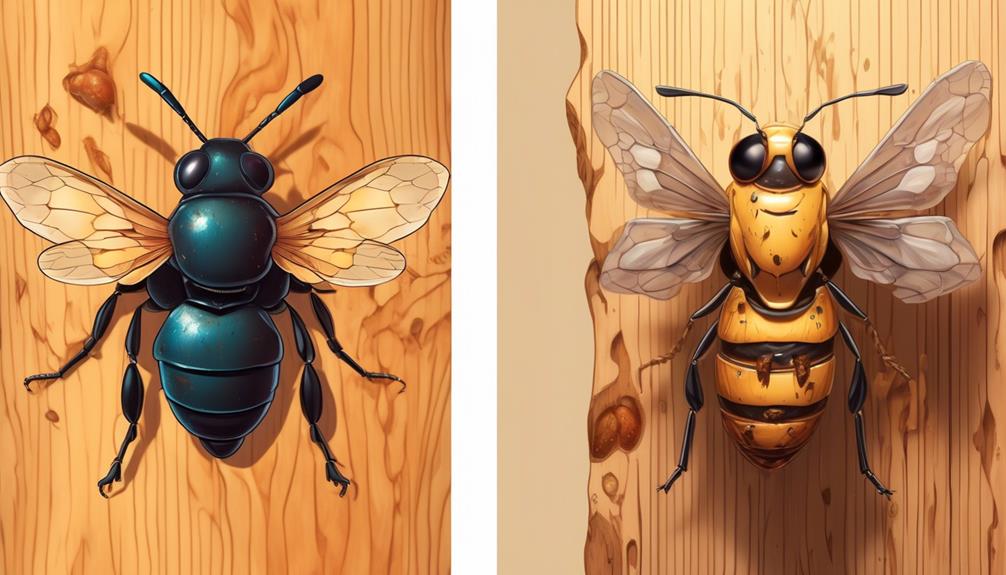
Having understood the damage these pests can cause, it's crucial for you to be able to accurately identify carpenter bees and termites in order to take appropriate action.
Carpenter bees are large, ranging from 1/2 to 1 inch in length, and are similar in appearance to bumblebees. However, their abdomen is shiny, black, and hairless, unlike the fuzzy abdomen of bumblebees. Males are harmless, while females can sting but generally won't unless threatened. Carpenter bees drill into wood to lay their eggs, leaving behind round, smooth holes.
Termites, on the other hand, are significantly smaller, about 1/4 to 1/2 inch long, and have a creamy white to brown color. They've straight antennae and a body that's roughly the same width from head to tail – unlike ants that have a pinched waist. Termites are often discovered due to their damage, not the actual pests. Look for mud tubes on walls, which termites build for travel, or soft and hollow sounding wood.
Effective Control Measures
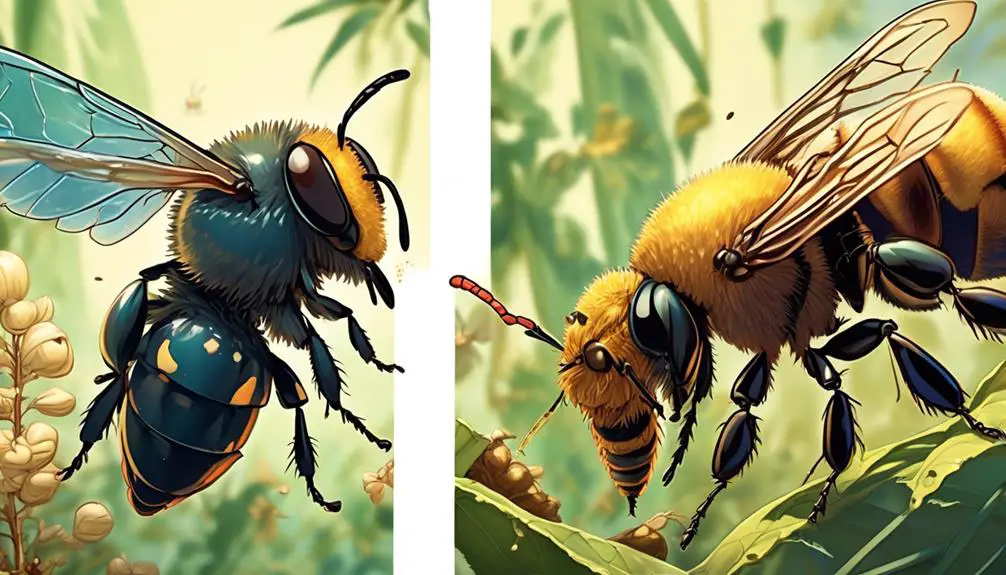
In order to effectively control and eliminate carpenter bees and termites, you'll need to employ a multi-faceted approach that includes prevention, detection, and pesticide application. Prevention methods often center around reducing attractive conditions for these pests. This means removing dead wood and sealing entrances to your home.
Detection is key in managing these pests. Regularly inspect your home for signs of damage, such as small holes in wood or sawdust-like excrement. Once you've identified an infestation, it's crucial to choose the right pesticide. For termites, soil-applied or wood treatment pesticides are typically used. Carpenter bees, on the other hand, can be effectively controlled using residual insecticides.
To summarize, here's a handy table:
Pest | Prevention | Pesticide |
|---|---|---|
Termites | Remove dead wood, seal entrances | Soil-applied or wood treatment pesticides |
Carpenter Bees | Seal entrances, treat exposed wood | Residual insecticides |
Conclusion
In wrapping up, you've now grasped the distinctions between carpenter bees and termites. You recognize their damage potential, and can identify them accurately.
Implementing effective controls is essential for the safety of your home. Remember, understanding these pests and their behaviors is key to a successful intervention.
So, remain vigilant and proactive, because in the battle against these destructive invaders, knowledge truly is your best defense.

